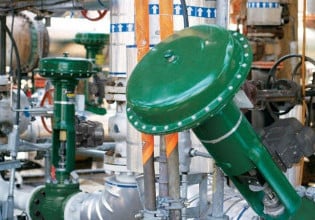Delphi Automotive Systems (Troy, MI) is demonstrating high-power solutions to meet the growing electrical energy demands of next-generation vehicles at the Frankfurt International Motor Show (September 16-26, 1999). Technologies being showcased include 42V and dual 14/42V architectures, a 36V absorbent glass mat (AGM) lead-acid battery, next-generation high-power generators, dc/dc converters, and an advanced LiPoTek lithium-polymer battery.
Fuel-economy gains are achieved with the new architectures, since all belt-driven systems could be electrically powered, relieving drag on the engine and reducing under-hood space requirements.
A proposed industry standard of 42V has automakers and suppliers looking at new ways to use the higher power to redesign systems on future vehicles. The dual-voltage system, which includes both 14V and 42V circuits, is favored by many in the industry, according to Delphi Automotive. Traditional low-voltage devices could run off the 14V system while the 42V system would power those applications that need and/or run more efficiently with higher power.
Other advanced storage and power-generation technologies on display include a 36V AGM lead-acid battery, which uses less electrolytes, enabling smaller size, lighter weight and higher power with longer life under extreme temperature conditions; Delphi's LiPoTek lithium-polymer battery that is a fraction of the size and weight of lead-acid batteries and can be conformed to various shapes for packaging flexibility; dc/dc converters that would be used on 14/42V systems to transform 42V currents to 14V for lights and other low-power applications; and ENERGEN power-management systems, which enable battery power to work in conjunction with the internal combustion engine for advanced power applications and next-generation hybrid propulsion systems.
"Current luxury vehicles typically use up to 2.8kW of power, but that's expected to double within the next five years," said Gary Cameron, chief engineer of Delphi's Energenix Center. "Technologies like electric brakes and steering, electrically heated catalysts and electromagnetic valve trains are all expected to require higher power, and this will lead to higher voltage electrical systems."






